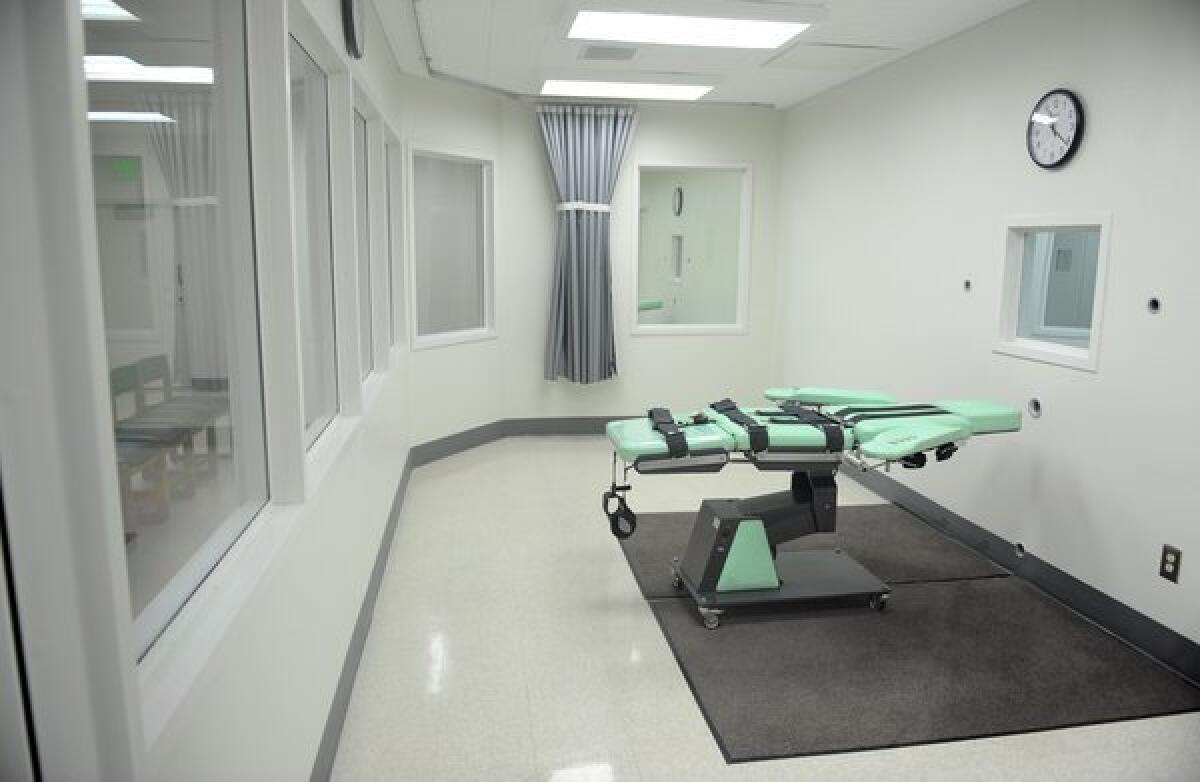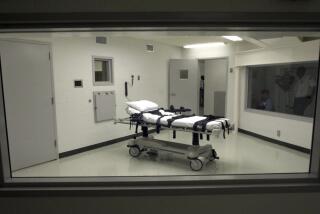California executions on hold since 2006 likely won’t resume soon

- Share via
SAN FRANCISCO — No inmate has been executed in California since 2006, and a ruling Thursday by a state appeals court is likely to further delay executions for years.
A three-judge panel of the 1st District Court of Appeal unanimously decided that the state’s lethal injection regulations were not properly vetted. The ruling continues a de facto moratorium on executions in place since 2006, when a federal judge found that they risked inflicting cruel and unusual punishment on death row inmates.
The decision written by Justice J. Anthony Kline upheld a Marin County judge’s decision that California prison officials failed to comply with public participation requirements when they last revised the state’s lethal injection procedures.
The appeals court said the Department of Corrections and Rehabilitation did not fully inform the public of alternatives to the three-drug method of execution the department favored.
“A hearing is ‘on the merits’ and ‘meaningful’ only if the interested public has timely received all available information that is relevant to the proposed regulations, accurate, and as complete as reasonably possible,” Kline wrote.
Corrections officials never explained why they favored continuing the state’s three-drug lethal injection or their reasons for rejecting other methods, the court said.
That failure was particularly significant because many commentators had complained that one of the three drugs the state has used -- pancuronium bromide -- could both create and mask excruciating pain by paralyzing inmates during executions, the court noted. The state’s own expert also had recommended a single-drug execution method.
Corrections officials told the court that they had responded to 29,416 correspondences from the public, posted notices of its proposal in all California prisons, and held a lengthy hearing in which 102 people commented on the proposed lethal injection protocol.
But Kline said the state’s view of the purpose of the public participation law was “far too limited and simplistic.”
“Affected people cannot be thought to have been heard … simply because large numbers of interested people were provided an opportunity to be heard,” Kline wrote. “The public participation contemplated by the [law] is not a numbers game.”
The regulations struck down by the court were finalized after a federal judge ruled that California’s execution method could expose inmates to unconscionable pain in violation of the U.S. Constitution.
Years of litigation have prevented the state from resuming lethal injection, and prisoners on death row are more likely to die of suicide or old age than an executioner’s needle. The row has grown over the years to include more than 700 inmates, the largest in the nation.
The state could appeal the decision to the California Supreme Court or propose a new method of execution.
ALSO:
Earthquake: 3.2 quake strikes near Malibu
Littlerock residents carried weapons in case of dog attacks
Doctor told AEG that Michael Jackson was a drug addict, lawyer says
Twitter: @mauradolan
More to Read
Sign up for Essential California
The most important California stories and recommendations in your inbox every morning.
You may occasionally receive promotional content from the Los Angeles Times.











